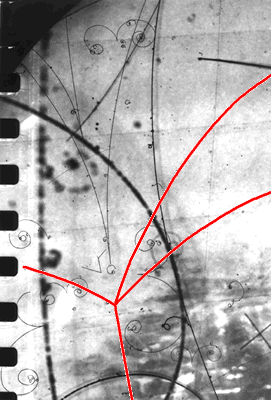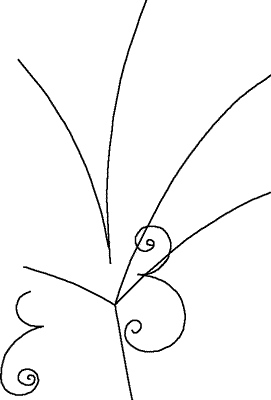6. Uncovering the particle zoo
In the second half of the twentieth century particle physicists invested a lot of effort and ingenuity in investigating what emerged when particles collided with each other. They found a large number of particle types and properties. In addition to the familiar proton, neutron and electron, they discovered exotic particles to which they gave names like lambda, delta, omega etc. Much of the investigations were carried out using
bubble chambers. A typical bubble chamber contained a liquid under pressure and
the pressure was released a little when triggered by the passage of particles.
It is a bit like releasing the top of a bottle of a fizzy drink. Charged particles left tracks behind them as they passed through the bubble chambers. Detailed analysis of the tracks,
looking at how the tracks of the particles curved in a magnetic field, and
applying the laws of conservation of momentum and energy revealed particles of differing charges and masses.
A typical bubble chamber photograph and some particle tracks are shown below.
As the zoo of particles grew, particle physicists eventually worked out that all of those observed could be described in terms of quarks, antiquarks and leptons.
back to the interactions Index page next
page: Building particles from quarks



